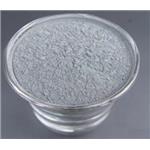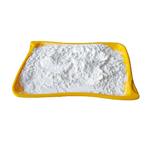- Sodium Hydride
-

- $5.90 / 25kg
-
2023-12-12
- CAS:7646-69-7
- Min. Order: 1kg
- Purity: 99%
- Supply Ability: 200tons per month
- Sodium hydride
-

- $0.00 / 25KG
-
2023-09-23
- CAS:7646-69-7
- Min. Order: 1KG
- Purity: 99%
- Supply Ability: 50000KG/month
|
| | Sodium hydride Chemical Properties |
| Melting point | 800 °C (dec.) (lit.) | | density | 1.2 | | Fp | 185°C | | storage temp. | Store below +30°C. | | solubility | Soluble in molten sodium. Insoluble in ammonia, benzene,carbon tetrachloride, carbon disulfide and all organic solvents. | | form | powder (moistened with oil) | | color | White to pale gray | | Water Solubility | REACTS | | Sensitive | Air & Moisture Sensitive | | Merck | 14,8625 | | Exposure limits | ACGIH: TWA 5 mg/m3
OSHA: TWA 5 mg/m3
NIOSH: IDLH 2500 mg/m3; TWA 5 mg/m3; STEL 10 mg/m3 | | CAS DataBase Reference | 7646-69-7(CAS DataBase Reference) | | NIST Chemistry Reference | Sodium hydride(7646-69-7) | | EPA Substance Registry System | Sodium hydride (NaH) (7646-69-7) |
| | Sodium hydride Usage And Synthesis |
| Physical properties | Sodium hydride belongs to ionic crystals, salt compounds in which the hydrogen is negative monovalent ions. When heating, it is unstable, decomposition without melting, hydrolysis reaction of sodium hydride with water to prepare sodium hydroxide and hydrogen.
Pure sodium hydride is silver needle-like crystals, commercially available sodium hydride merchandise usually is subtle gray crystalline powder, the proportion of sodium hydride is 25% to 50% dispersed in oil. The relative density is 0.92. Sodium hydride is crystalline rock salt type structure (lattice constant a = 0.488nm), and as lithium hydride in ionic crystalline, hydrogen ion is existent in anion form. Heat of formation is 69.5kJ · mol-1, at the high temperature of 800 ℃, it decomposes into metallic sodium and hydrogen; decomposes explosively in water; reacts violently with lower alcohols;dissolves in molten sodium and molten sodium hydroxide; insoluble in liquid ammonia, benzene, carbon tetrachloride and carbon disulfide.
| | Related chemical reaction | Sodium hydride is a strong reducing agent, For example, titanium tetrachloride can reduced to metallic titanium at 400 ℃: TiCl4 == 4NaH + Ti + 4NaCl + 2H2.
At atmospheric pressure and heated to 425 ℃, it decomposes to generate hydrogen gas. And it can violently react with water, even causes a fire, and produces sodium hydroxide and hydrogen. It reacts with liquild ammonia to prepare amine salt (sodium amide) and hydrogen. NaH + NH3-(H2) → NaNH2 + H2.
At a high temperature, sodium hydride also reacts with halogen, sulfur vapor, sulfur dioxide and carbon dioxide. It is highly reductive, liberates the metal from metal oxides, metal chlorides.
TiCl4 + 4NaH → Ti + NaCl + 2H2.
Sodium hydride reacts with boron trifluoride to generate diborane.
2BF3 + 6NaH → B2H6 + 6NaF.
Sodium hydride is stable in dry air below 230 ℃, over this temperature it will burn into sodium oxide. If there is the presence of trace amounts of sodium, even at low temperatures it is also easy to fire. When firing, water and organic fire extinguishing agent must not be used.
| | Uses | Sodium hydride can be used for condensation and alkylation reaction and can be used as a polymerization catalyst, used for the manufacture of drug synthetic and used in fragrance industry, used for manufacturing boron hydrides, used as metal surface rust, reducing agents, condensing agent, desiccant and Clay Johnson's reagents.
Used as a condensing agent, an alkylating agent and a reducing agent, etc.
It is an important reductant for Pharmaceutical, perfumes, dyes, but also as a drying agent, an alkylating agent, etc.
| | Preparation | Sodium hydride is prepared by passing hydrogen gas into molten sodium metal dispersed in oil. Alternatively, the hydride can be made by passing hydrogen into sodium dispersed over the surface of an inert solid, such as, hydrocarbon above 200°C
2Na + H2 → 2NaH
| | Flammability hazard characteristics | Encountering Water or moist air to emit hydrogen and can be combustible
| | Storage Characteristics | Treasury ventilation low-temperature drying, stored separately from oxidants, halogens, strong acids.
| | Description | Sodium hydride, is a binary salt that has a specific hazard of releasing hydrogen upon contact with water. It is an odorless powder that is violently water reactive. The four-digit UN identification number is 1427. The NFPA 704 designation is health 3, flammability 3, and reactivity 2. The white space at the bottom of the diamond has a W with a slash through it, indicating water reactivity. | | Chemical Properties | Grey solid. Pure sodium hydride forms colorless cubic crystals; however, the commercial product contains traces of sodium metal, giving it a light gray color. At atmospheric pressure, sodium hydride slowly evolves hydrogen above 300 ℃. At 420 ℃ decomposition is rapid but melting does not take place. Sodium hydride is a salt and therefore insoluble in inert organic solvents. It dissolves in molten sodium hydroxide, in sodium – potassium alloys and in molten LiCl – KCl eutectic mixtures (352 ℃). Sodium hydride is stable in dry air but ignites above 230 ℃, burning to form sodium oxide. It is hydrolyzed rapidly in moist air and as a dry powder it is spontaneously flammable. Sodium hydride reacts extremely violently with water, the heat of hydrolysis being sufficient to ignite the liberated hydrogen. It reacts with carbon dioxide to form sodium formate. | | Physical properties | Silvery needles; refractive index 1.470; density 0.92 g/cm3; decomposes at 800°C; decomposes explosively in water; reacts violently with lower alcohols; dissolves in molten sodium and molten sodium hydroxide; insoluble in liquid ammonia, benzene, carbon tetrachloride and carbon disulfide. Sodium hydride is available commercially
as 80 % and 60 % dispersions in mineral oil.
The light-gray pourable material has an average particle size of 10 mm (Degussa, Chemetall, Ventron). The oil protects the surface of
the highly reactive sodium hydride, which easily becomes passivated by the slightest atmospheric exposure or, worse, can ignite on longer
contact with air. | | Uses | At low temperatures where reducing properties of sodium are undesirable as in the condensation of ketones and aldehydes with acid esters; in solution with molten sodium hydroxide for the reduction of oxide scale on metals; at high temperatures as a reducing agent and reduction catalyst. | | Uses | Direct intercalation into C60 results in the superconducting material (NaH)4C60. | | Uses | Sodium hydride is used to enhance the condensation reactions of carbonyl compounds through the Dieckmann condensation, Stobbe condensation, Darzens condensation and Claisen condensation. It acts as a reducing agent used to prepare diborane from boron trifluoride. It is also used in fuel cell vehicles. Further, it is used to dry some organic solvents. In addition to this, it is involved in the preparation of sulfur ylides, which is utilized for the conversion of ketones into epoxides. | | Production Methods | Sodium hydride, reactive with water yielding hydrogen gas and NaOH solution, formed by reaction of sodium and hydrogen at about 360 °C (680 °F). Used as a powerful reducing agent. | | Definition | sodium hydride: A white crystallinesolid, NaH; cubic; r.d. 0.92; decomposesabove 300°C (slow);completely decomposed at 800°C.Sodium hydride is prepared by thereaction of pure dry hydrogen withsodium at 350°C. Electrolysis ofsodium hydride in molten LiCl/KClleads to the evolution of hydrogen;this is taken as evidence for the ionicnature of NaH and the presence ofthe hydride ion (H–). It reacts violentlywith water to give sodium hydroxideand hydrogen, with halogensto give the halide and appropriatehydrogen halide, and ignites spontaneouslywith oxygen at 230°C. It is apowerful reducing agent with severallaboratory applications. | | Reactions | The most important chemical property of sodium hydride is its basicity. Sodium hydride reacts irreversibly with a large number of compounds containing acidic hydrogen atoms, including alcohols, phenols, thiols, and amines, but also with weak carbon acids such as ketones, carboxylic esters, and acetylenic hydrocarbons.
Sodium hydride is a poor reducing agent because of its high basicity and its insolubility in inert organic solvents. If the sodium hydride is complexed with alcoholates and metallic salts, complex reducing agents are formed that can reduce halides, alkenes, and ketones. | | General Description | A silvery to whitish powder or slurry in oil. Used to make other chemicals. | | Air & Water Reactions | Highly flammable. Ignites or explodes in contact with air of high humidity [Bretherick 1979 p. 107]. Reacts violently with water producing a caustic solution (NaOH) and hydrogen (H2). Heat of reaction may ignite the hydrogen. | | Reactivity Profile | Sodium hydride is a powerful reducing agent. Attacks SiO2 in glass. Ignites on contact with gaseous F2, Cl2, Br2, and I2 (the last at temperatures exceeding 100°C), especially in the presence of moisture, to form HF, HCl, HBr, and HI [Mellor 2:483 1946-47]. Reacts with sulfur to give Na2S and H2S [Bretherick 1979 p. 107]. Can react explosively with dimethyl sulfoxide [Chem. Eng. News 44(24):7 1966]. Reacts vigorously with acetylene, even at -60°C [Mellor 2:483 1946-47]. Spontaneously flammable in fluorine. Reaction with dimethylformamide, when heated, runs away [Chem. Eng. News, 1982, 60(28), 5]. Initiates a polymerization reaction in ethyl-2,2,3-trifluoropropionate such that the ester decomposed violently [Bretherick 5th ed. 1995]. Presence in the reaction of diethyl succinate and ethyl trifluoroacetate, has twice caused explosions [Chem. Brit., 1983, 19, 645]. | | Hazard | Dangerous fire risk, reacts violently with
water evolving hydrogen. Irritant. | | Health Hazard | SOLID: Will burn skin and eyes. Harmful if swallowed. | | Fire Hazard | FLAMMABLE. MAY EXPLODE ON CONTACT WITH WATER. Accidental contact with water used to extinguish surrounding fire will result in the release of hydrogen gas and possible explosion. | | Flammability and Explosibility | Highly flammable | | Safety Profile | The powder ignites spontaneously in air. Flammable when exposed to heat or flame. Potentially explosive reaction with water, diethyl succinate + ethyltrifluoroacetate (above 60℃), dimethyl sulfoxide + heat, sulfur dioxide. Ignition or violent reaction with dimethylformamide (above 50℃), ethyl 2,2,3-trifluoropropionate, oxygen (at 230℃). Incompatible with acetylene + moisture, glycerin, halogens, sulphur. Normal fire extinguishers are unsuitable, use sand, ashes, solurn chloride. The commercial material may contain traces of sodium. When heated to decomposition it emits toxic fumes of Na2O. See also HYDRIDES. |
| | Sodium hydride Preparation Products And Raw materials |
| Raw materials | Methanol-->Sodium-->Hydrogen-->Orthoboric acid | | Preparation Products | 6-(1H-PYRAZOL-1-YL)NICOTINONITRILE-->N-(4,6-DIMETHYLPYRIMIDIN-2-YL)-N-METHYLBENZENE-1,4-DIAMINE-->2-(TETRAHYDRO-PYRAN-4-YL)-ETHANOL-->CYCLOOCTANONE-->5-FLUORO-2-METHYLBENZOTHIAZOLE-->TEMAFLOXACIN-->Sarafloxacin-->Ofloxacin-->5-Fluoro-2-oxindole-->(6-(1H-Pyrazol-1-yl)pyridin-3-yl)methanol-->5-BROMO-2-ETHOXY-PYRIMIDINE-->1-BENZYL-2-IMIDAZOLECARBOXYLIC ACID-->(R)-(-)-Benzyl glycidyl ether-->Spermidine-->ETHYL 3-AMINOBENZOFURAN-2-CARBOXYLATE-->4-(TRIMETHYL-UREIDO)-BENZENESULFONYL CHLORIDE-->3-(3,5-DIMETHYL-PYRAZOL-1-YL)-PROPYLAMINE-->4-HYDROXY-2-METHYLPYRIMIDINE-->3-AMINO-2,2-DIMETHYL-1-PROPANOL-->4-BROMO-PYRAN-2-ONE-->3,5-DIMETHYL-3H-IMIDAZOLE-4-CARBOXYLIC ACID ETHYL ESTER-->N-METHYL-6-(1H-PYRAZOL-1-YL)NICOTINAMIDE-->7-METHYL-1,6-OCTADIENE-->CIS-9-TETRADECENYL ACETATE-->Sertaconazole nitrate-->Methyl 3-amino-4-methylthiophene-2-carboxylate-->2 , 4-BIS(BENZYLOXY)-5-BROMOPYRIMIDINE-->1-BOC-4-HYDROXY-4-(HYDROXYMETHYL)-PIPERIDINE-->ETHYL 4-METHOXY-3-OXO-BUTANOATE-->6-(1H-PYRAZOL-1-YL)NICOTINIC ACID-->Furo[2,3-b]pyridine-2-carboxylic acid, 3-amino-, ethyl ester (9CI)-->2,2-DIMETHYLCYCLOHEXANONE-->1-Benzyl-2-methyl-1H-imidazole-->Methyl cedryl ether-->Methyl 6-(1H-pyrazol-1-yl)pyridine-3-carboxylate-->3,5-Difluorophenylacetic acid-->TPTZ-->FLOSEQUINAN-->CROCONAZOLE-->Methyl nicotinoylacetate |
|